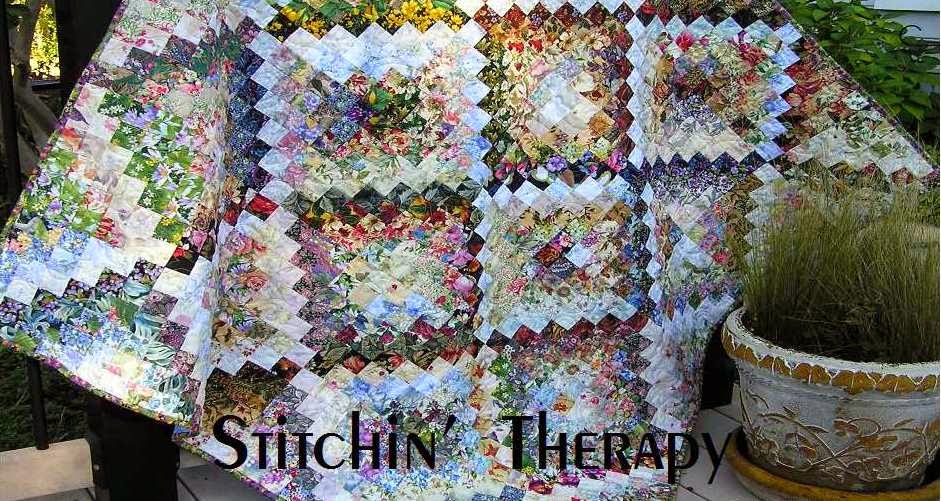Welcome to the Blogger's Quilt Festival!
Kit Kat has always been one of my favorite quilts. Naturally, it is a watercolor--strip pieced-- and tells a story. I took a class on the technique in 2000 and really found my quilting heart in watercolor quilts. I love to blend the fabrics to fool the eye and make you look closer to see what is beyond.
For this technique you use 25 different fabrics for each block. Using full width of fabric cuts, you get about 18 blocks that are alike. Using fat quarters, you would get 9 blocks. For this quilt, I used up a lot of short lengths of strips and made about 4 different combinations to get enough blocks.
The challenge with this technique is the layout. You can't be sure what you will get until you try....very subjective. Some block combinations have more light areas, and others more dark areas. No matter what I plan before sewing, the blocks seem to have a mind of their own. Yet, for a large lap quilt size (this is 50" by 65"), it is the way to do it.
The story......
I tried all kinds of layouts before settling on this one. It reminded me of the trellis on the back deck that had a Clematis vine growing on it. And our cat, Pookie, loved to nap in the sun near the trellis. One day I watched as she patiently watched the butterflies flit all around her. And then that paw flashed out as she tried to catch one for her own. Thankfully, she missed, but I loved the moment.
So as I studied the trellis layout, that picture in my memory came back to me. I machine appliqued a couple of vines, leaves, and blossoms along with a pink butterfly. The silhouette of Pookie was drawn from a photo and raw edge appliqued too. I added 2 narrow strip inset borders before the outer border. I love the way it frames the quilt like a photo.
So this quilt became the photo of that special memory. Each quilt tells a story. It is part of the threads of our lives. And that's my secret to share....I stitch a little piece of my heart into each quilt I make. That is what gives them life.
May each stitch you take create a special memory of your life and those you love.
So this quilt became the photo of that special memory. Each quilt tells a story. It is part of the threads of our lives. And that's my secret to share....I stitch a little piece of my heart into each quilt I make. That is what gives them life.
May each stitch you take create a special memory of your life and those you love.
Happy Stitching....Debbie






















































